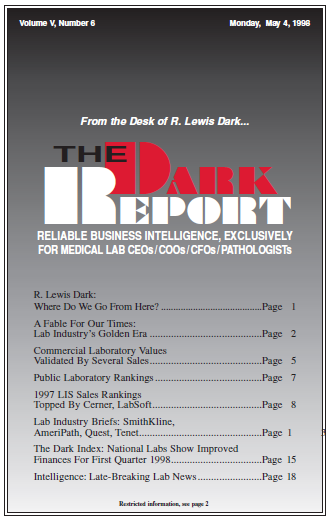CEO SUMMARY: Many current owners of independent laboratories now wish they had sold during the glory days of commercial laboratory acquisitions. Recent sales transactions demonstrate that current market valuation for clinical laboratories is based on actual cash flow. Even at these new valuations, there are few buyers. OWNERS OF INDEPENDENT LABORATORIES who want to sell …
Commercial Lab Values Validated By Recent Sales Read More »
To access this post, you must purchase The Dark Report.


